It can be overwhelming knowing what tools and equipment you need when you first start sewing. Here you can find a full list of sewing tools and equipment with names and pictures to help you get started.
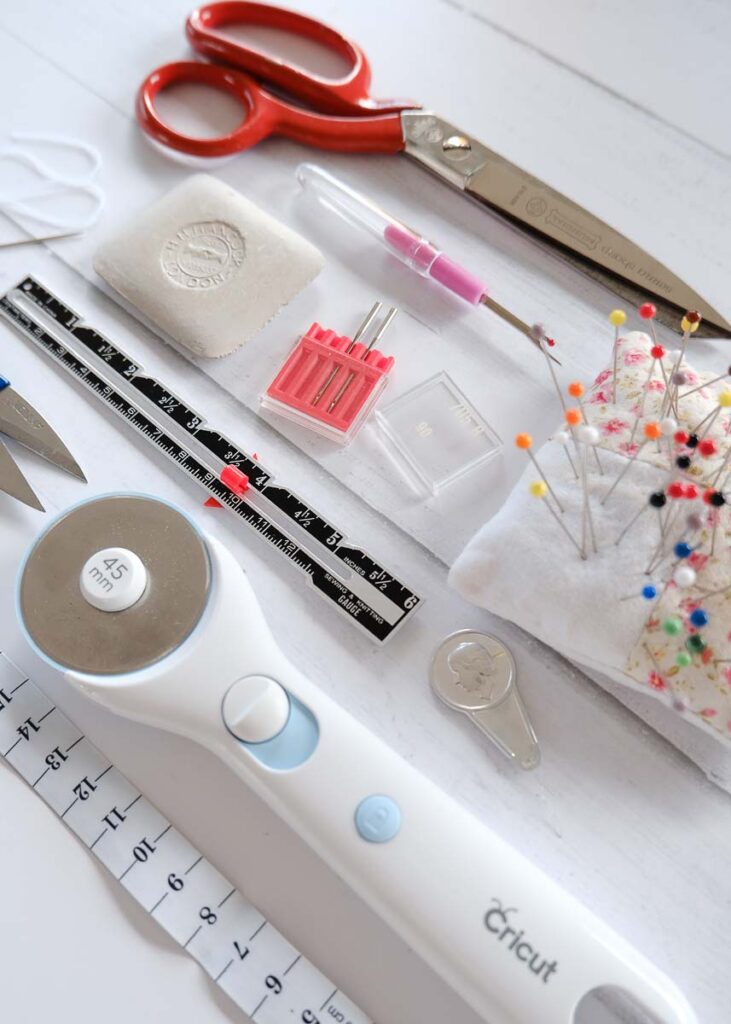
It can be super confusing to know what sewing tools and equipment to purchase when you start sewing. If you have looked online or in stores, you may have discovered that there is a vast variety of products out there targeted at sewing.
Most of these are not necessities but if you are new to sewing, you might want a helping hand with understanding what’s a luxury and what’s necessary for your sewing kit.
I have put together the below sewing tools and equipment list with names and pictures to help you get a better understanding of what you may like to purchase. You will discover that you don’t need to buy too many things to get started!
In addition to the basics, I have also added some other useful tools and equipment that you might like to add to your sewing kit in the future.
The tools included in this post are from my own personal sewing room that I use all the time!
This post contains affiliate links, you can read my full disclosure here.
Watch the detailed sewing tool video
Shop the tools in this post
Sewing tools & Equipment List
Sewing Machine
A sewing machine is the most expensive purchase you will have to make when starting off on your sewing journey (unless you are going to hand sew).
You will want to get one that is able to change machine feet so you can sew zips, buttons, or piping. Most affordable machines are able to do this and they often come with a set of basic machine feet included.
The only time this may be an issue is if you are buying a vintage sewing machine.
I personally have a Bernette 38, which I love a lot! It sews cleaner buttonholes than any of my previous sewing machines and has a built-in thread cutter.

If you are looking for an affordable option with lots of great features, I recommend looking at the Brother XM2701. I had this machine for over 13 years, it was the very first sewing machine that I learned how to sew on.

Fabric Shears
Normal scissors won’t make the cut here! Fabric shears are specialised scissors made for cutting fabrics.
The blades are sharp and made to clean-cut through lots of different weights of fabric.
You will find that fabric shears aren’t too expensive for a decent pair.
They are a great tool to spend a bit of extra money on if you have the funds because they will last you forever! You can get the blades sharpened or buy your own tool to sharpen them yourself.
Tip: Don’t ever cut out paper with your fabric shears as this blunts the blades!
I would recommend tieing a piece of fabric or ribbon around the handle so you remember that your fabric sheers are for cutting out fabric only!
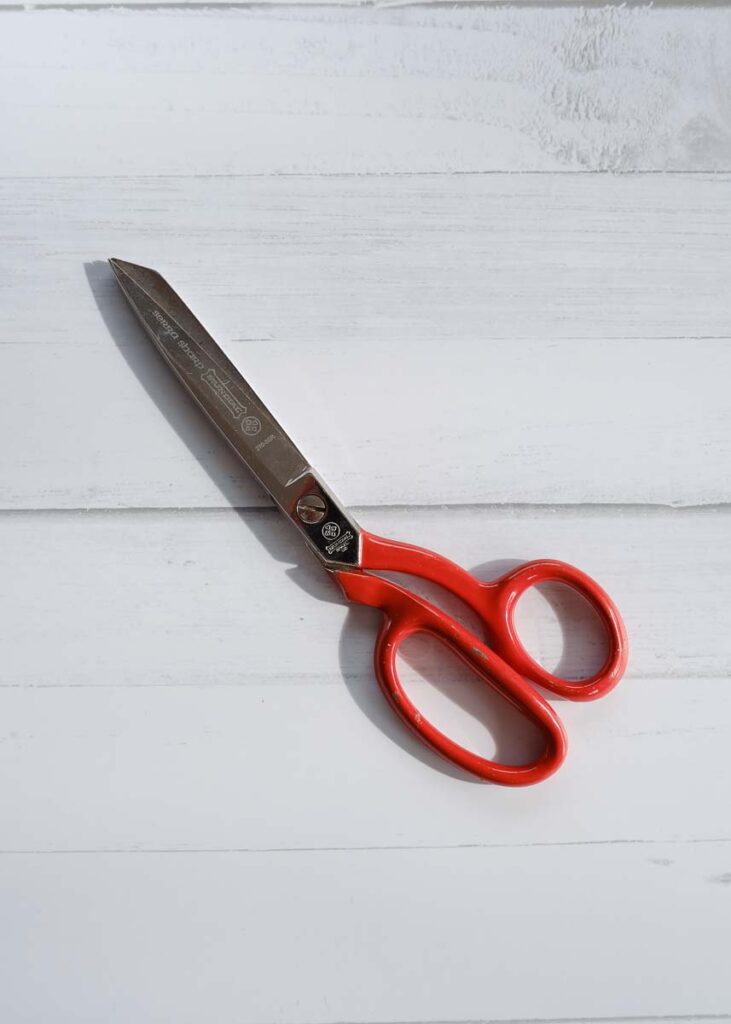
Thread
Thread is essential in the sewing world, you can’t sew without thread. If you have gained an interest in sewing you will know what thread is for, I’m sure.
When you start off all you will need is some basic colours like black and white thread to start with.
You can sew using white thread with lighter colours and black thread on darker colour fabrics.
When you come round to sewing speciality colours, buy them as you go to make sure the colours match rather than having lots of expensive threads just sitting around your sewing room.
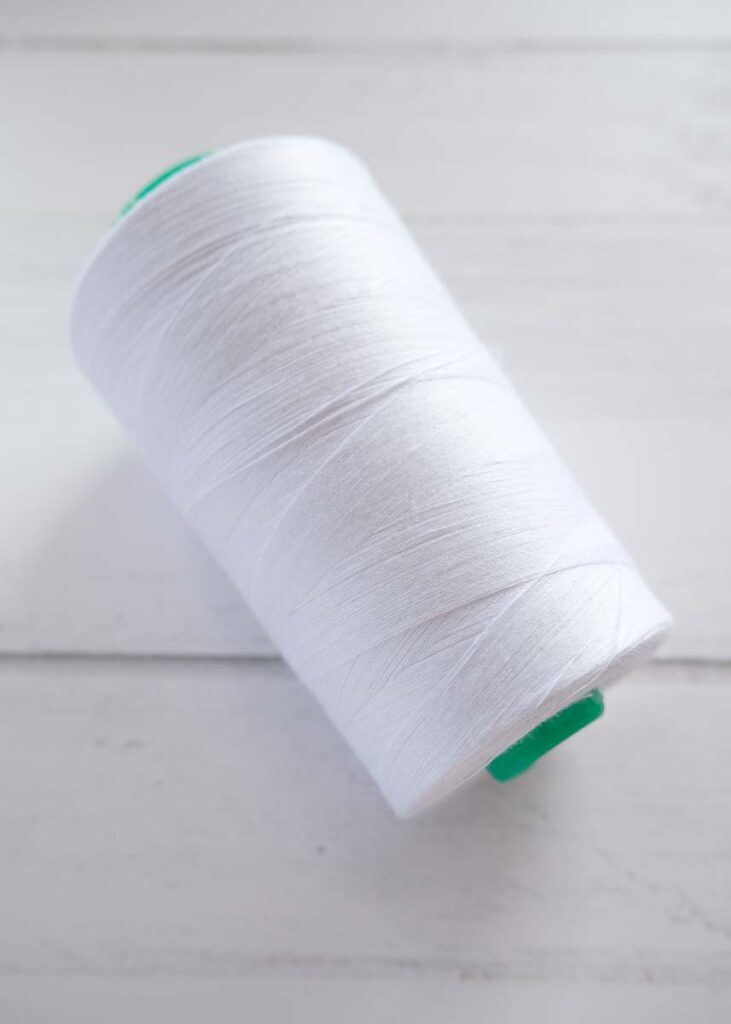
Pins
Sewing pins are super handy items to have, they will be your best friend whilst you learn how to use your sewing machine.
You can use pins to hold paper patterns onto fabric before you start cutting out pieces. They are commonly used for holding multiple pieces of fabric together when sewing.
You can find cheaper packs of pins around but I recommend getting a pack of good quality ones like these sewing pins. The tips on them will be nice and sharp so they won’t snag your fabrics.
I also find the cheaper pins I have purchased in the past rust a bit and this can get onto your fabrics.
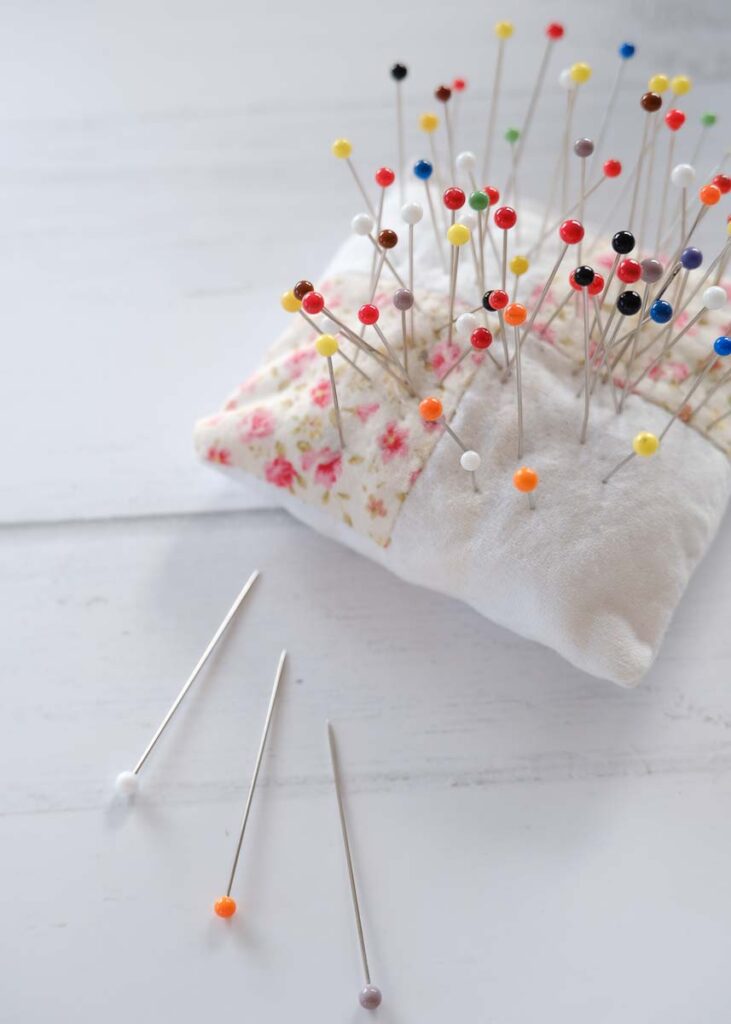
Tape Measure
A tape measure that is flexible often known as a tailor’s tape is an important tool to have in your sewing kit. You will need a tape measure to help you figure out your body measurements like bust, waist, and hips if you are planning to use sewing patterns.
You will also find it helpful for tutorials that don’t include sewing patterns but measurements instead.
I often use a tape measure to cut out pattern pieces rather than patterns like in my Wrap Skirt tutorial blog post.
You may also find this useful to measure out curtains or duvet cover projects. These tape measures are super cheap so I suggest stocking up on a few to keep on hand.
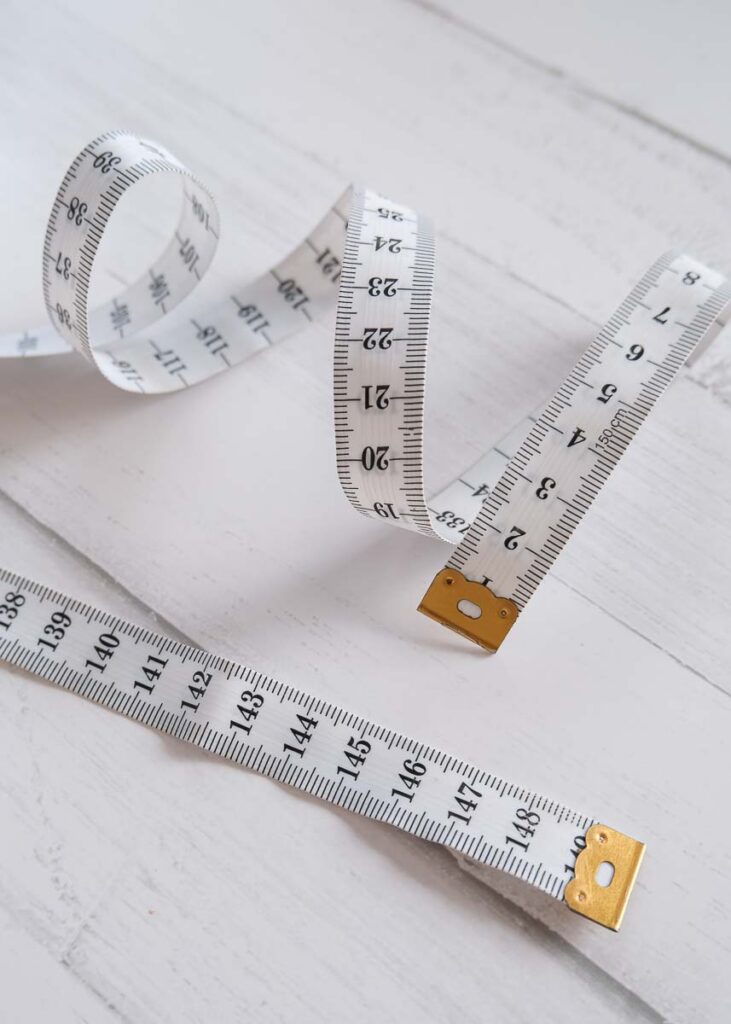
Bobbins
Bobbins are the little round thread holders that go into the bottom of the sewing machine. They feed the thread onto the bottom side of the fabric.
It’s great to have a bunch of machine bobbins on hand that are pre-filled, and ready for your sewing projects. Bobbins are cheap and some come with handy cases to keep things nice and organised.
Sewing Machine Needles
When you first begin sewing you will probably break a few needles. I definitely did!
Get yourself a few packs of universal machine needles so if you break your machine needle halfway through a project you have spares waiting for you.
Universal sewing needles mean you can pop them into any domestic sewing machine and they should work fine.
If you are sewing knit fabric, you will need to purchase ballpoint needles, these have a blunter end as the name suggests. This stops the needle from cutting through the fibres.

There are also different needle weights depending on what type of fabric you are sewing. Most fabrics will sew fine with a standard needle size but specialised fabrics like thick denim or delicate silk will require different needle sizes. This article on needle sizes by Treasurie is filled with lots of helpful information.
Weights
Weights are a really great tool to use when you are cutting out sewing patterns. They help you get better cutting accuracy if you are using a rotary cutter and mat (which I talk more about further down).
If you are pinning paper patterns to fabric, sometimes weird folds can occur and you end up cutting out some pattern pieces with random jut outs.
Using weights can help you to keep your pattern and fabric nice and flat to cut out or to chalk your pattern pieces.
This is something I have learned the hard way! This process works for me but pins may be the easiest choice for you. Just try and see what works best for you.
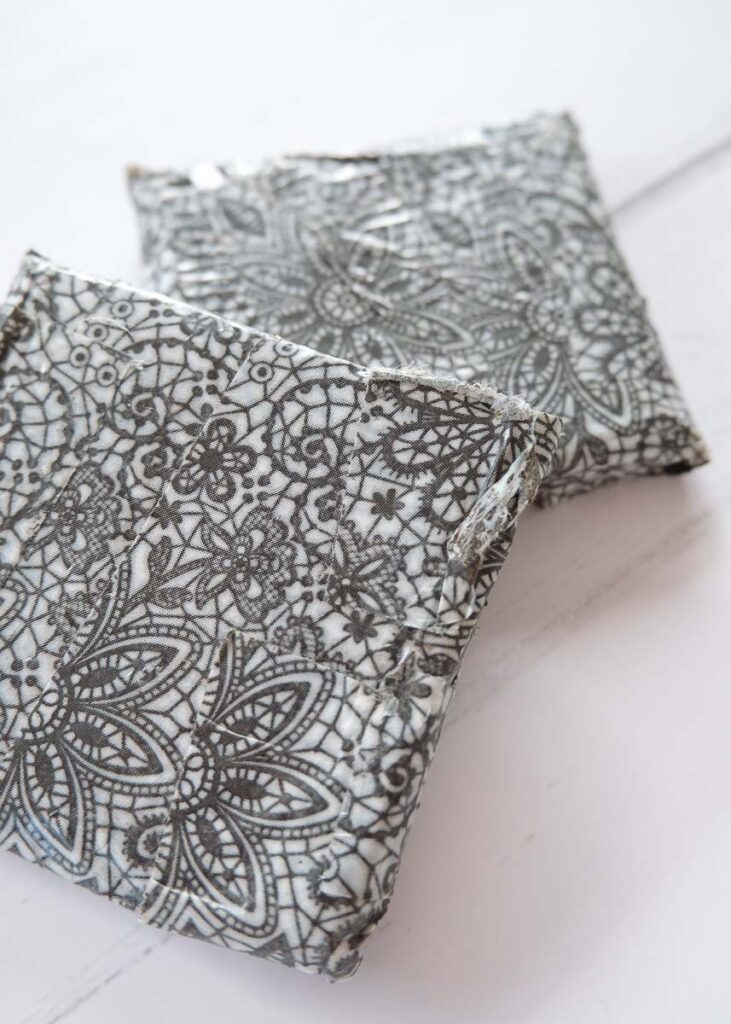
Chalk
Dressmaking chalk is a nifty tool to have in your sewing kit. You can trace out sewing patterns onto fabric without worrying that it will mark the fabric permanently as it washes out.
Chalk is available in quite a few ways including a triangular piece which is the more traditional option.
You can also find chalk pencils that are useful for making darts, pleats, drill holes, pocket placements and anything else that is precise.
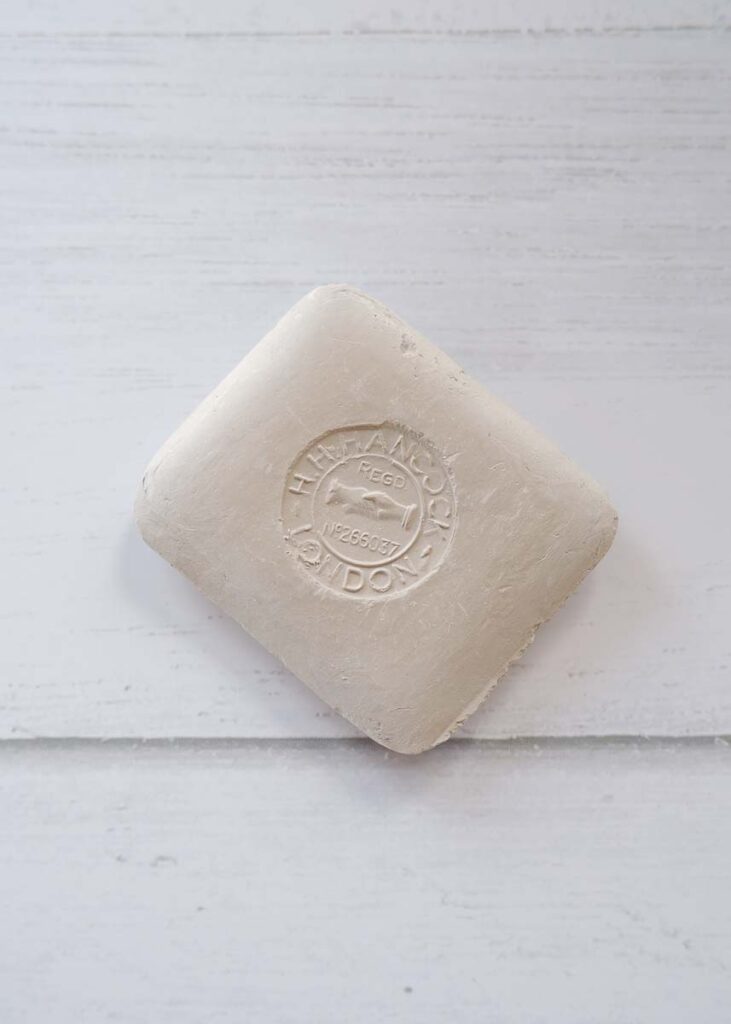
Snips
Small scissors or cutting tools are often referred to as snips in the sewing world. These are small scissors or handleless blades that are used to cut off threads when sewing.
It’s faster to grab a pair of snips and trim threads than using a large pair of fabric shears.
Sometimes seamstresses attach their snips to a necklace or lanyard around their neck, so they don’t lose them in the sewing room mess that often occurs.
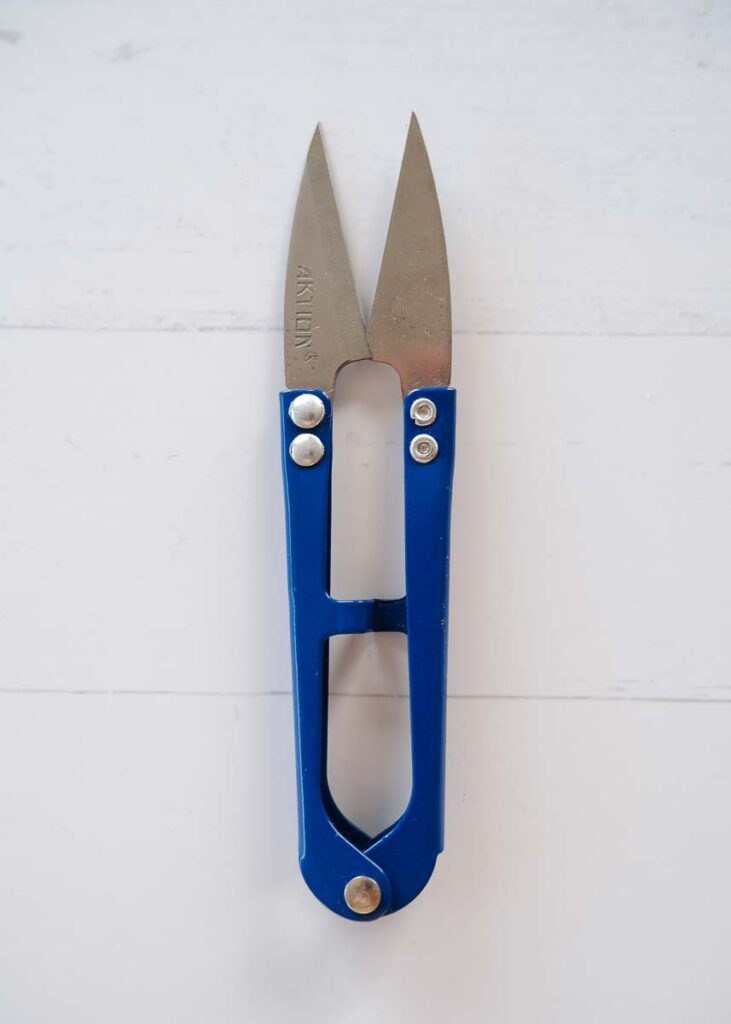
Pins & Extras
A few handy extras to have in your sewing kit are hand sewing needles, safety pins, and unpickers.
I have a tin filled with lots of needles, safety pins and other bits and bobs that come in handy. I suggest you create something similar for your bits to go into.
Hand sewing needles and safety pins can be found for cheap at the supermarket. An unpicker can be found at the dollar store or craft shop.
An unpick is a handy tool to use when you sew stitching lines in the wrong place. It helps cut the thread easily instead of you trying to use snips which could cut your fabric too.
Safety pins can be used to turn through straps, ties or thread through drawstrings and elastic into casings.
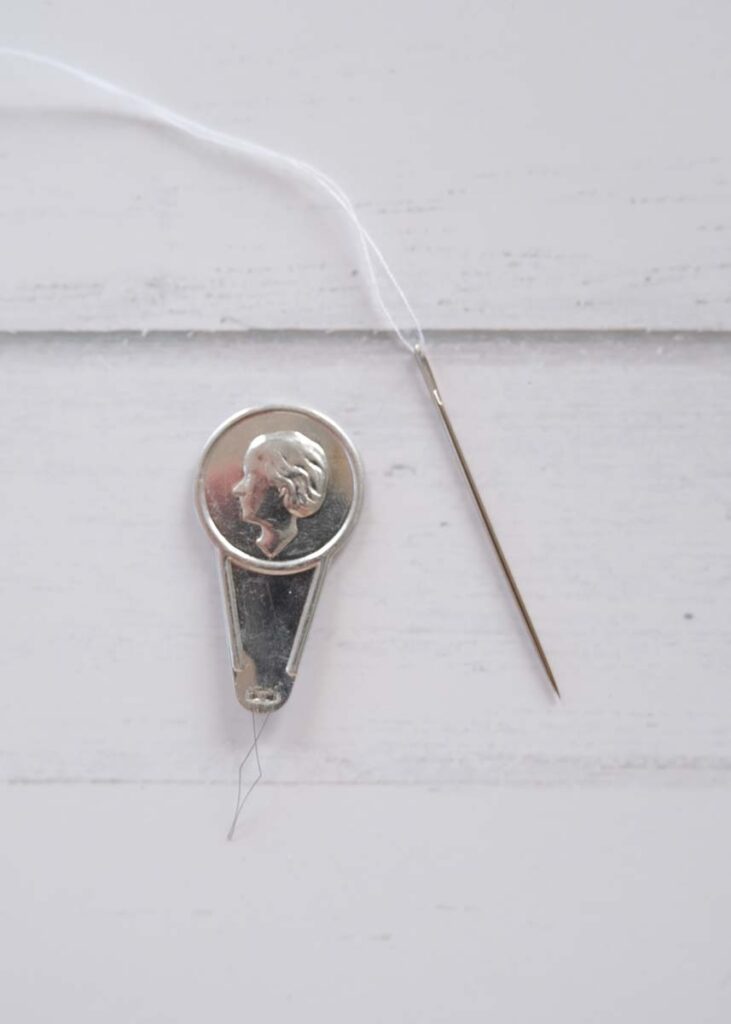
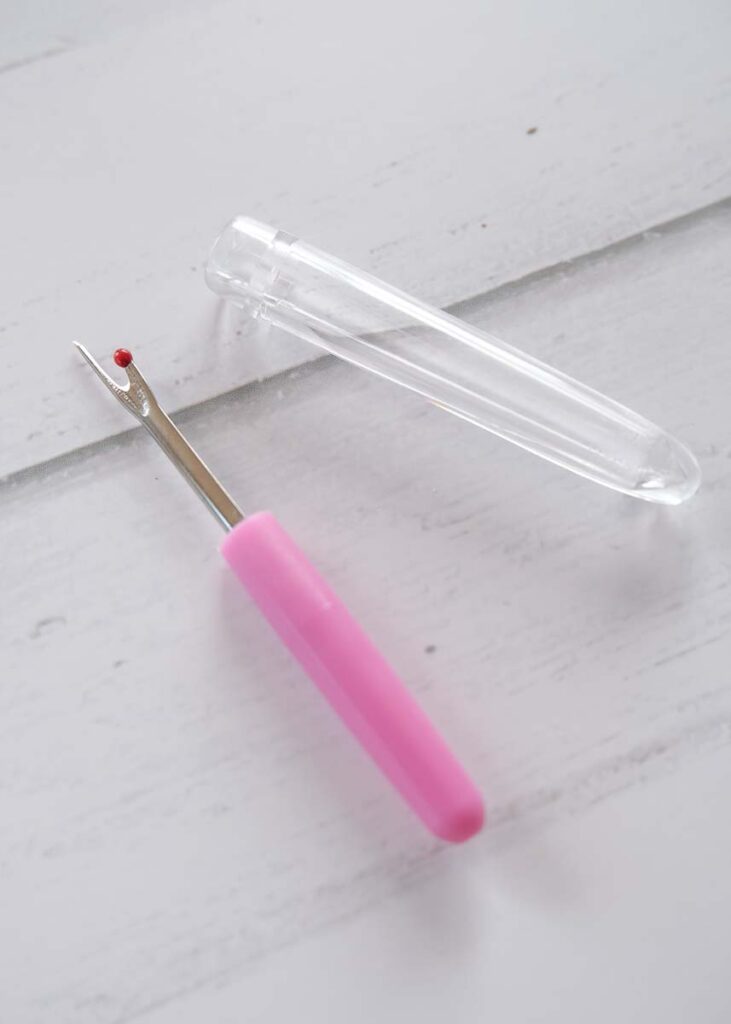
Extra Sewing tools and Equipment
I have added some extra sewing tools and equipment below that are helpful but not entirely necessary when you first start learning to sew.
You may even find you have a few of these items already in your home.
Iron
An iron and ironing board are items that most of us have in our laundry cupboards already.
Ironing your sewing projects is a real game-changer. Steam and heat can really help turn homemade-looking pieces into quality items.
Not only is an iron great for adding crispness to garments you can find it useful to press vintage sewing patterns flat before cutting!
You may also be required to fuse interfacing onto fabric when sewing some garments so having an iron handy for this step is important.
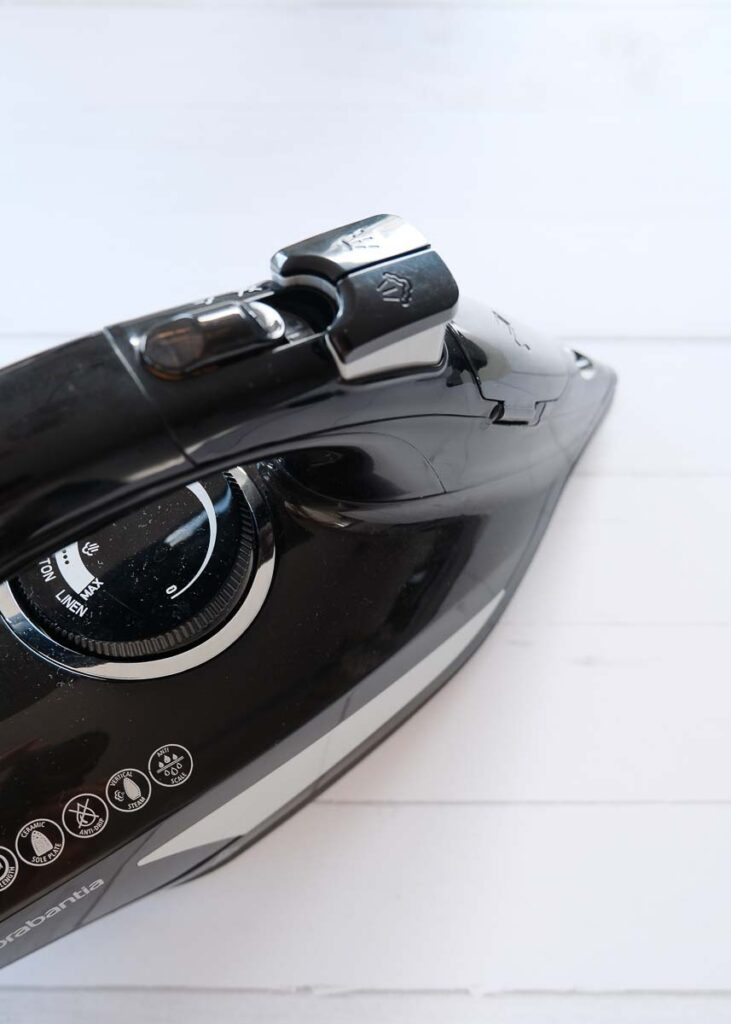
Rotary Cutter and Mat
A rotary cutter is one of my favourite tools. I have a Fiskars model and Cricut both work superbly.
You can cut out projects really quickly by placing fabric onto the cutting mat, the sewing pattern on top and using the rotary cutter to cut out your pattern pieces. I find this to be an accurate way to cut out my projects and the fastest!
I often use the mat and rotary cutter with a quilting ruler to cut bias binding strips and quilt pieces quickly and accurately.
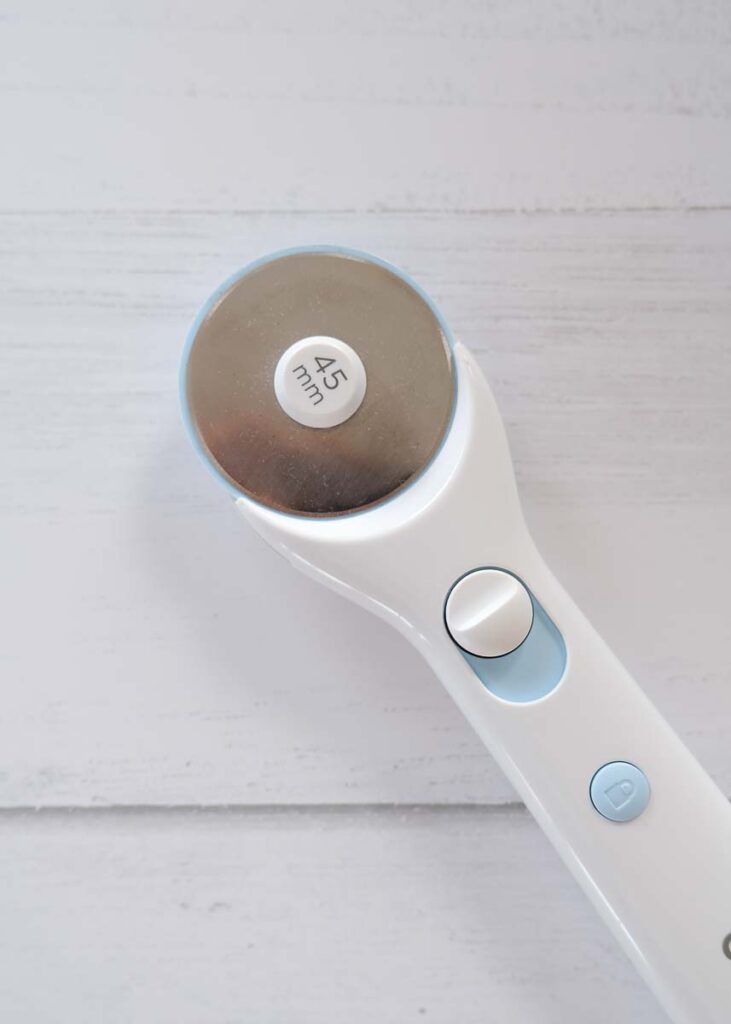
Serger (Overlocker)
A serger is a special machine that creates the stitching you find on the edges of seams. You will find the majority of the clothing you have purchased will have overlocking finishing the raw edges of the fabric.
Investing in a serger is a great idea once you start to get more advanced with your sewing skills. It will allow you to quickly neaten up your projects and get them looking super professional.
Sergers are a great investment to look into if you find you enjoy sewing knit projects. Knitted garments are often constructed by locking stitches, which is what an overlocking stitch is.
To Sum Up
And that’s it! You need a few essential tools when you are just starting. You may find alternatives for the items mentioned in this post or be happy to go without them. Sewing is a craft you can make your own, but it’s beneficial to understand what tools aren’t needed. That way, you have more money for the fabric to sew lots of new clothing or home projects.
I’m just a beginner ,it’s something l’m doing on the side and thanks for your website it helped a lot to identify a lot of useful tools
Hi Tinashe, I’m so pleased that this has been helpful for you. Good luck with your sewing journey it’s such a wonderful skill to acquire x
thanks